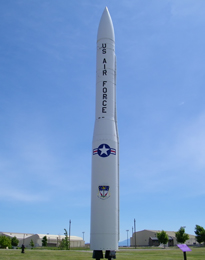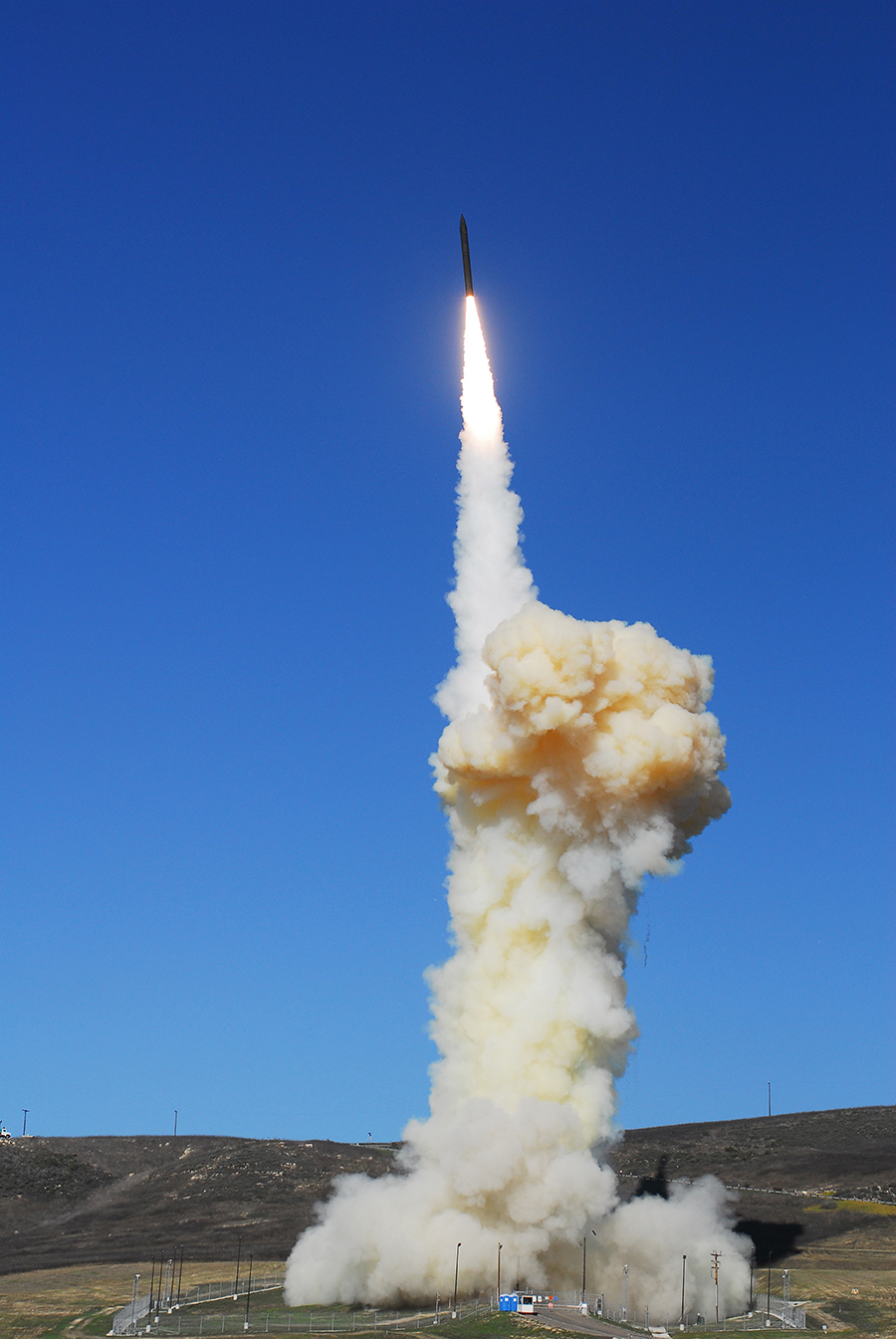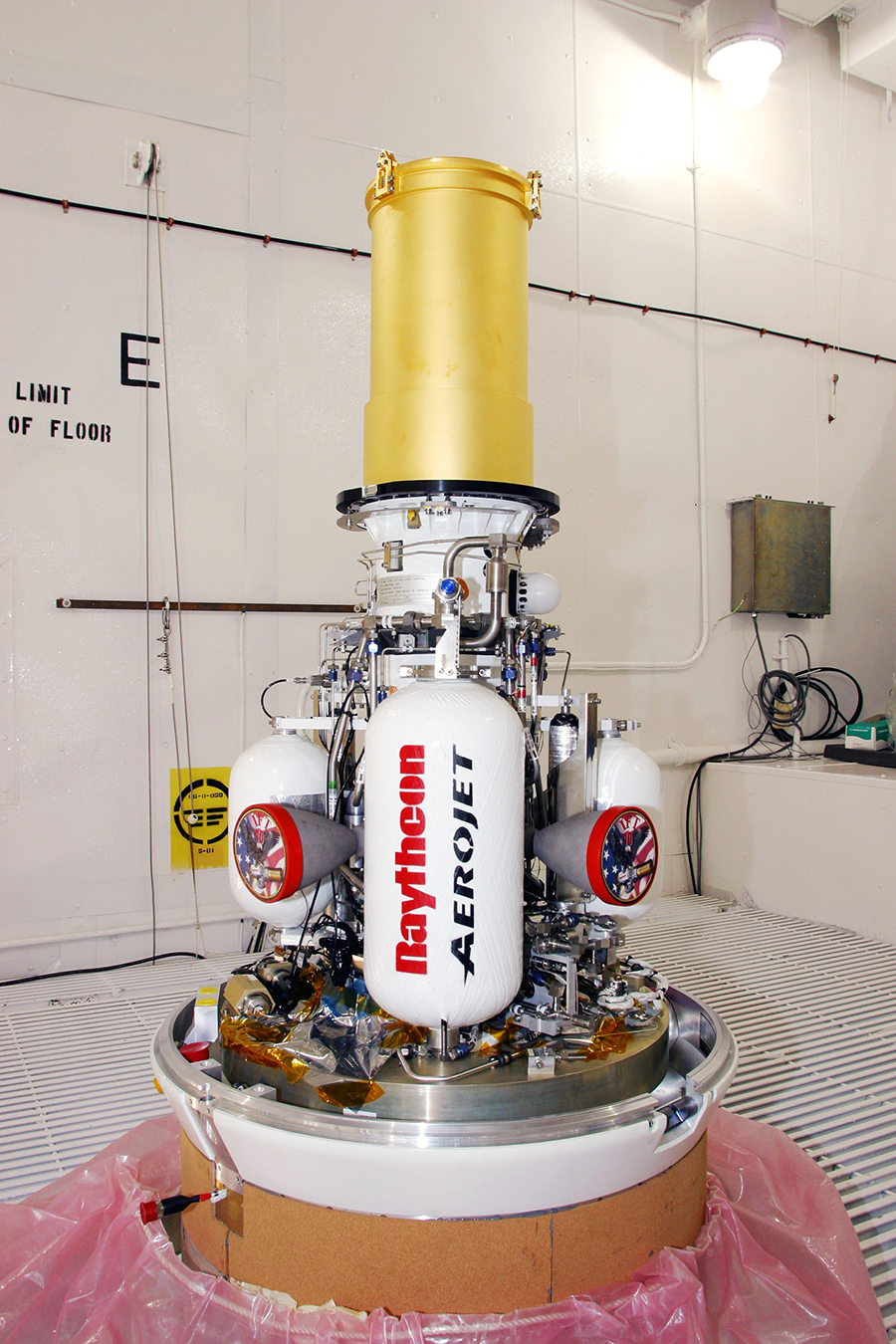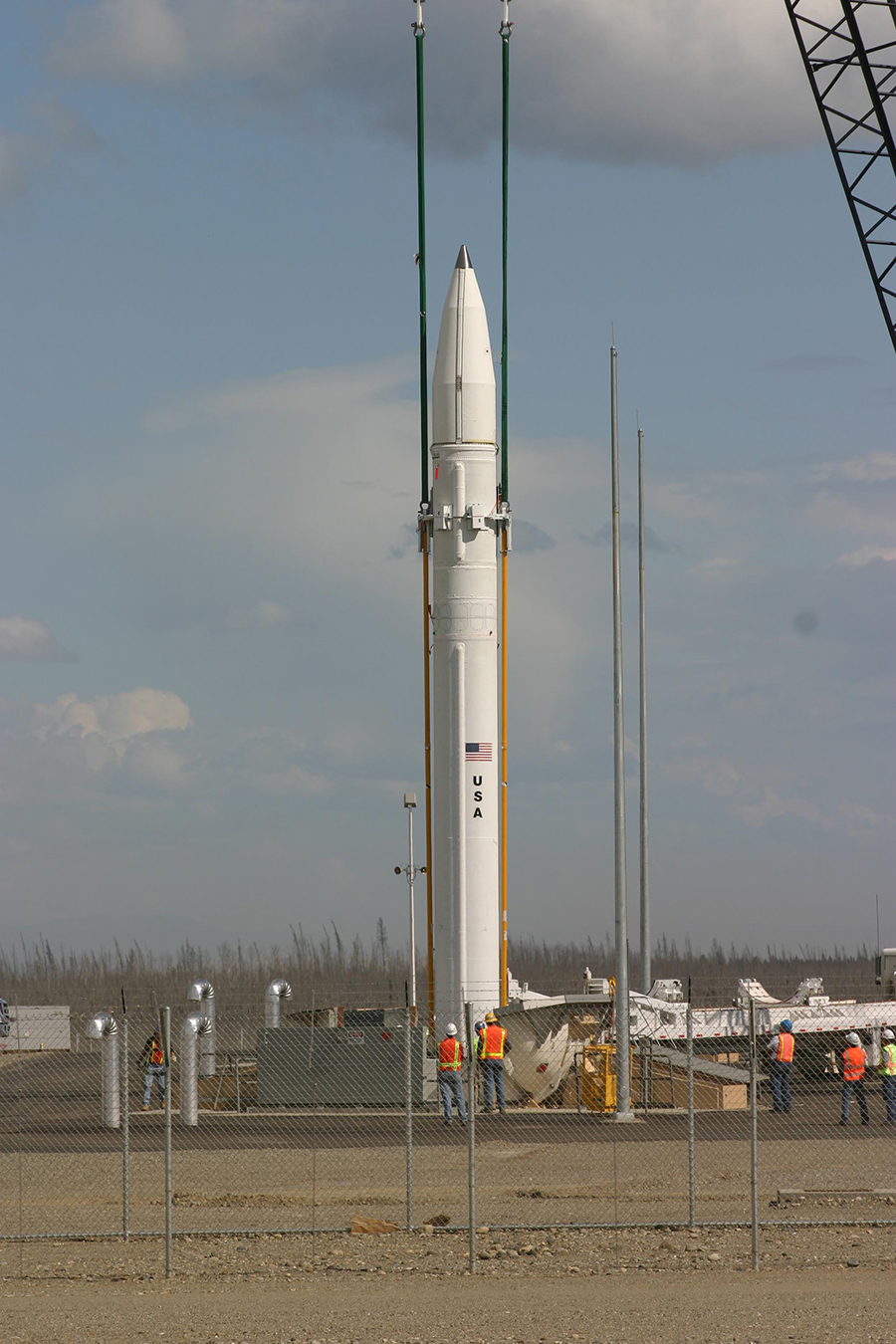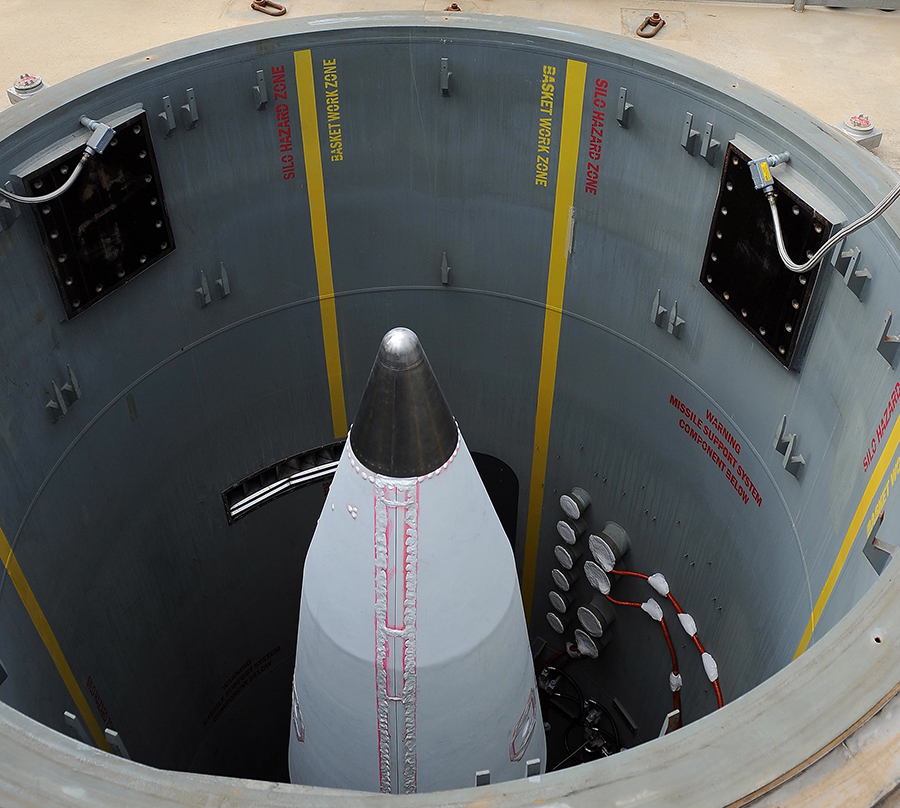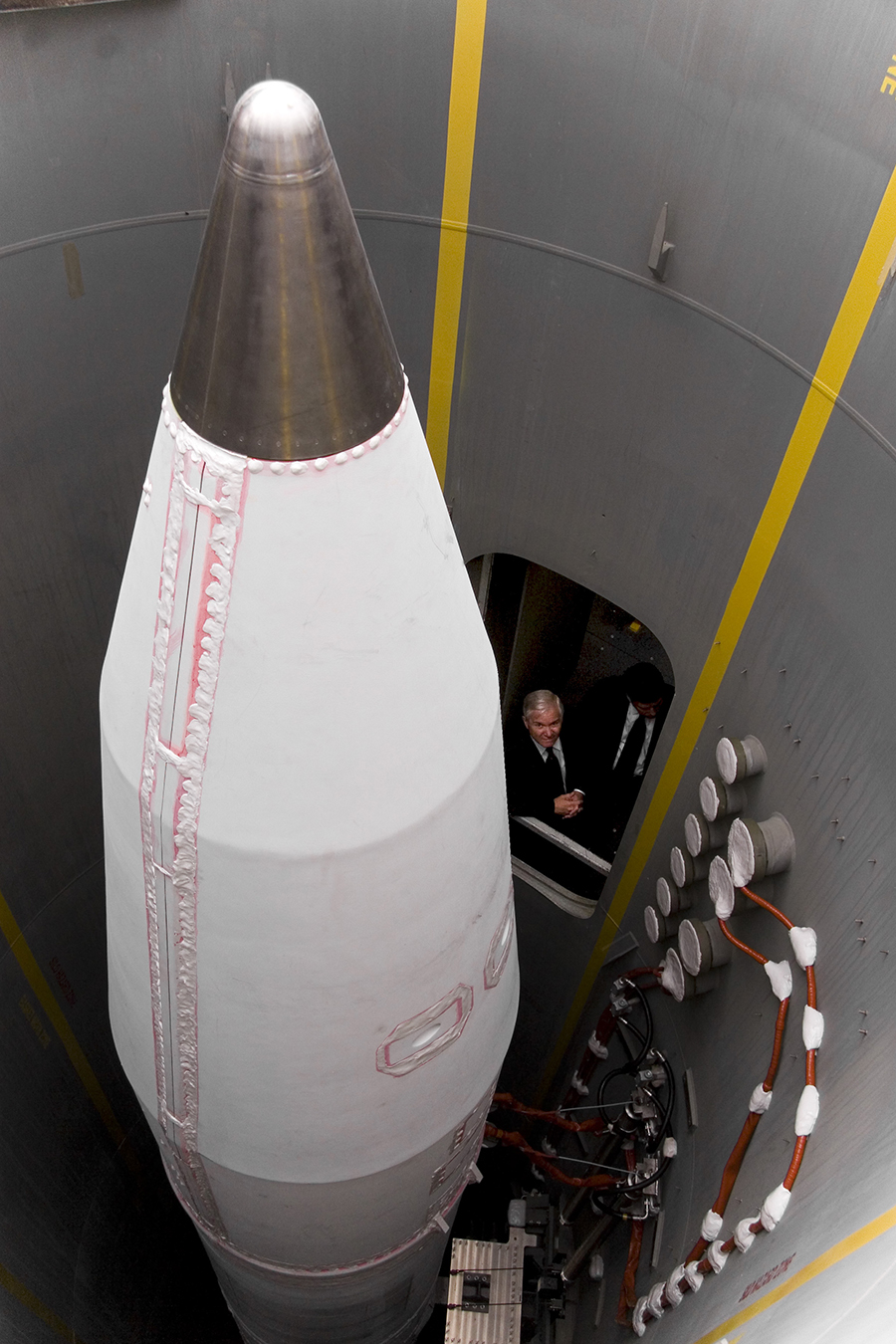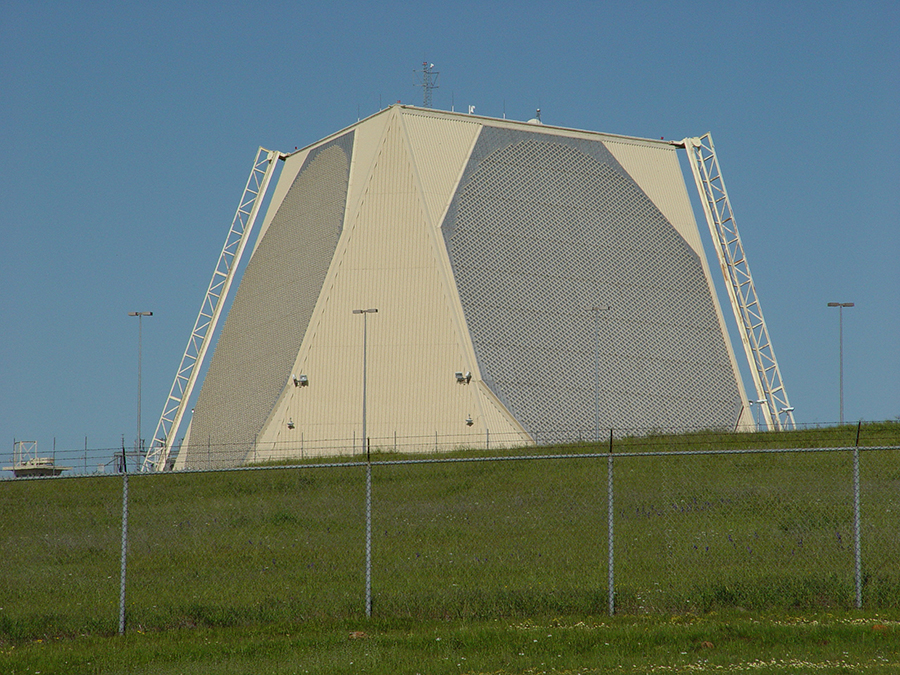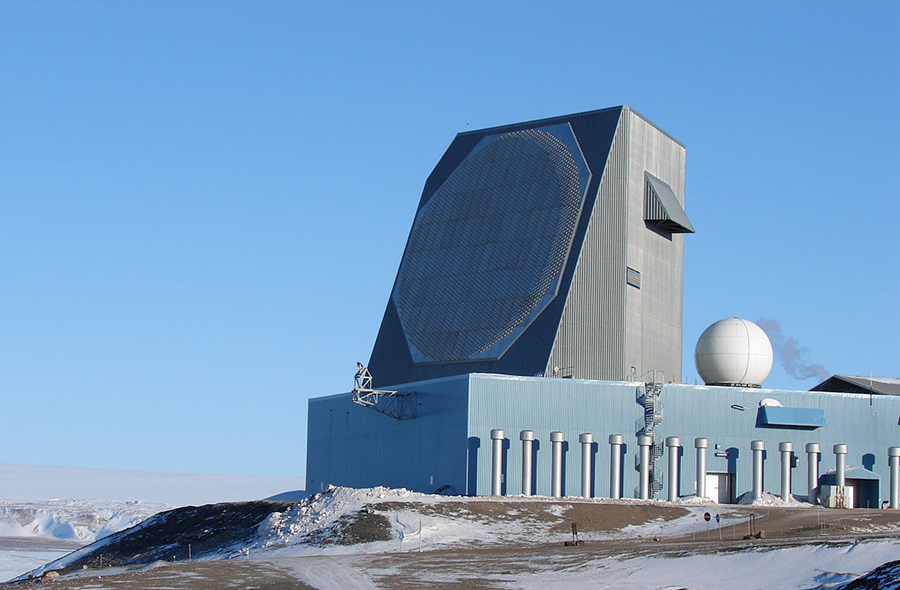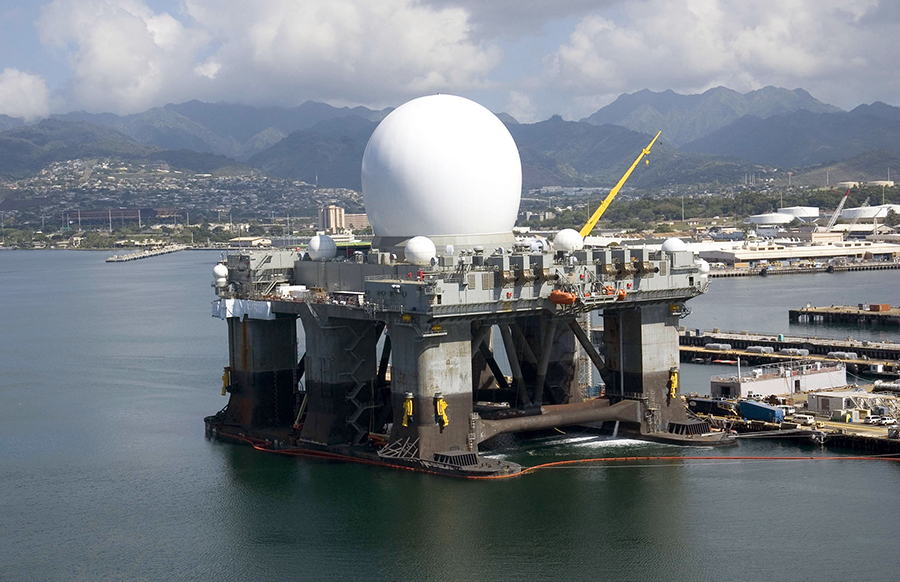Ground Based Midcourse Defense System
The Ground Based Midcourse Defense (GMD) system is the United States' current system designed to provide defense against enemy ICBM attack. This system consists of 30 Ground Based Interceptors (missiles) deployed at Fort Greely, Alaska and Vandenberg Air Force Base in California. There are an additional 14 interceptors planned to be deployed by 2017.
The GMD system is designed to launch a Ground Based Interceptor, GBI, that targets and destroys an incoming nuclear missile in space, during the middle or "midcourse" of its flight path. The interceptors do not rely on explosive ordinance to destroy the incoming nuclear warhead, but instead rely on eliminating the warhead with kinetic energy by physically colliding with it.
The destruction of the warhead is accomplished by using an Exoatmospheric Kill Vehicle, which separates from the booster of the interceptor, which then locates, targets, and smashes into the enemy warhead at a high rate of speed.
The boost vehicle being utilized with the Ground Based Interceptor system, is manufactured by the Orbital ATK company. Orbital ATK is the sole supplier of the Ground Based Interceptor booster. The design of this booster is based on the Pegasus, Taurus and Minotaur space launch boosters.
The Orbital ATK booster is 55.10 feet tall, 4.16 feet in diameter and weighs approximately 50,000 pounds. It produces a maximum thrust of 99,140 pound feet. It has 3 stages of boosters, that utilize hydroxyl-terminated polybutadiene solid rocket fuel for each of its 3 booster stages.
EKV Kill Vehicle
Components Of The Ground Based Midcourse Defense System
There are a number of components that make up the defense system of the GMD. They are as follows.
Defense Space Program (DSP) and Space Based Infrared System (SBIRS) Satellites that are designed to detect heat signatures of enemy missile launches.
Aegis Ballistic Missile Defense Ships that are deployed to facilitate radar tracking of enemy missiles.
Upgraded Early Warning Radars (UEWR) are located at three sites; Beale Air Force Base, California; RAF Flyingdales, United Kingdom; and Thule Air Base, Greenland.
Sea-Based X-Band Radar (SBX) a large ship that gathers tracking, trajectory and discrimination data.
C2BMC the Command and Control Center compiles all of the sensor and radar data that has been gathered by the above systems, to provide guidance data to the interceptor missiles.
Lastly, the system utilizes the Ground Based Interceptor missile and its Exoatmospheric Kill Vehicle. Below you will find links to videos of a launch of a Ground Based Interceptor from Vandenberg Air Force Base, as well was a CGI video created to provide an overview of how the system works. Given the scenario depicted is utilizing a different class of missile then the GBI missile interceptor, much of the same technology would be employed to detect, target and launch a Ground Based Interceptor and its kill vehicle.
Essentially, between the satellite systems deployed, combined with the early warning radar systems and X-Band radar, the ballistic missile defense system as a whole is designed to detect, locate, obtain data on velocity and trajectory, as well as determine what kind of enemy target is being scrutinized. Once this data has been compiled, this data is then uploaded to the Ground Based Interceptor missile that carries its payload, the Exoatmospheric Kill Vehicle, EKV. Once the missile has boosted the EKV into the atmosphere, it then releases the EKV, which then homes in on and destroys the missile and/or Reentry Vehicle. The video included below outlines this process.
Fort Greely, Alaska
Fort Greely's Garrison is home of the Ground Based Midcourse Missile Defense; 49th Missile Defense Battalion; Cold Regions Test Center and a number of other operations at this Garrison, located 100 miles south east of Fairbanks, Alaska. For further information on Fort Greely, follow the link below.
Photos - Ground Based Midcourse Defense System
Early Warning Radar
Sea-Based X-Band Radar
Interceptor And Kill Vehicle Launch Videos
Below are two videos capturing the operation of an interceptor missile being launched to target and destroy an enemy missile. The first video, "GBI and Target Launches" has actual footage of a target missile being launched from Alaska, and a Ground Based Interceptor missile being launched from Vandenberg AFB to eliminate the enemy (target) missile.
The second video, "GBI Video Depicting Interceptor Launch..." depicts the actual set of sequences of how the Ground Based Interceptor Defense System would be implemented in detecting, targeting and destroying an enemy missile and/or Reentry Vehicle. The video, produced by Northrop Grumman, is showing an interceptor missile deployed by the Navy, but the basic technology utilized by the GBI defense system deployed at Fort Greely, is being portrayed in the video.
